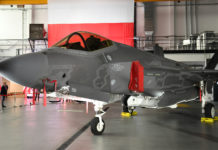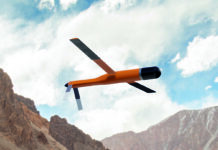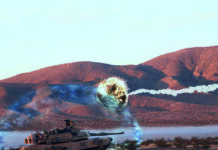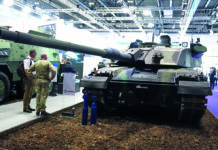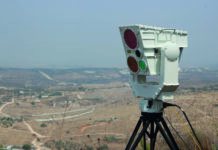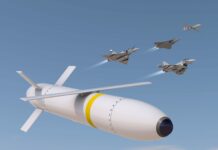Israel’s Carmel Programme Charting Future Concepts for Mounted Combat
Israel’s military assesses new approaches to future mounted combat, addressing the need to do ‘more with less’ – lighter and smaller combat vehicles that will be able to undertake more missions and capabilities, with smaller crews.
In its pursuit of protection, lethality and battlefield agility, Israel has been a forerunner of innovation in armoured combat vehicle technology. Israel’s priorities have not been centred on the classic AFV’s iron triangle, as its priorities moved between protection and versatility, over lethality and mobility, as reflected by the MERKAVA tank design. While the MERKAVA lived through 40 years of technological and combat operational evolution, from the Mk-1 to the latest version, MERKAVA Mk-4 BARAK, the Israeli Defence Force (IDF) assesses new approaches to future mounted combat. In August 2019, Israel’s Ministry of Defence (MoD) Research and Development Directorate (DRDD) completed an operational assessment of future combat vehicle technologies to be introduced on combat vehicles in late 2020 and beyond.
Some of those technologies were shown to IDF, MoD and foreign delegations invited to experience the different technologies and demonstrators first-hand. Indeed, ESD was also among the guests invited to explore the CARMEL.
Technology Demonstrators
DRDD invited three industry groups to provide technology demonstrators for the programme – Rafael, Elbit Systems and IAI. The demonstrators were all based on the M-113 used as a platform surrogate for the combat vehicle. The future platform will use a new chassis powered by a diesel generator, with a rechargeable battery bank to provide the electricity for propulsion and all systems.
During the first phase of the Carmel Programme, a significant challenge was presented to the three major Israeli defence companies: to prove the feasibility of an AFV that is operated by only two combat soldiers with closed hatches. The two persons employ different sensors on-board and off-board, including radars, thermal imaging sensors, video cameras, acoustic and lasers and drones. All inputs are fused and displayed to the crew for situational assessment and response.
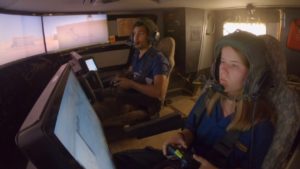
Each company was asked to develop its own technological concept that would transform and upgrade the interior part of the IDF’s combat vehicles to an advanced cockpit – like a fighter jet’s cockpit. The challenge was in proving the feasibility of two soldiers conducting closed-hatch operations and integrating technological capabilities that enhance mission efficiency for the IDF’s manoeuvre forces. To achieve this, each group took a different approach, utilising high-level integration, sensor fusion, vehicle autonomy, and artificial intelligence. These approaches enabled effective situational awareness and understanding, decision making and weapon employment, provided by different, advanced cockpit integrations capabilities.
Closed-Hatch Operations
Each team tested its solution over a period of one-week within a series of complex operational scenarios, where crews composed of DRDD teams used the vehicles in a variety of challenging scenarios, some facing 35 threats on a mission.
Each group took a different approach to meet their objectives – a light (35 tonne) combat vehicle armed with a medium calibre autocannon and missiles, and operated by a crew of two, with an additional seat for a third crew member operating specialist systems. Designed for manned operation, Carmel is equipped with sensors, artificial intelligence, and advanced automation and system autonomy to reduce operator workload. This approach enables human operators to take decisions and actions in a timely and effective manner.
Elbit’s Approach
Elbit Systems’ approach applied autonomous capabilities and Artificial Intelligence (AI) to accelerate decision making and facilitate target engagement with dramatically increased rapidity and accuracy. The AFV successfully demonstrated its capacity to function as an independent high fire-power strike cell, as a networked station for multi-spectral sensing and information fusion, as well as a base platform for operating additional unmanned systems.
Artificial Intelligence
The company’s Future Combat Vehicle Technology Demonstrator can perform all the key combat tasks with high level of autonomy – off road driving, rapid target acquisition and prioritisation, as well as fast high precision fire missions, day and night. The AFV is networked, allowing it to carry out missions ordered by Headquarters and other fighting platforms as well as to transmit intelligence to other forces. Additionally, the AFV is capable of operating other unmanned platforms, such as Virtual Takeoff and Landing (VTOL) to feed intelligence into the crew’s operational picture or a fighting UGV to perform high-risk missions.
Elbit Systems presented a technological concept, one that integrates two forms of User Interfaces (UI) – large screens for planning and IRON VISION augmented reality helmet displays in a combat phase of the mission. IRON VISION provides a ‘See-Through Armour’ function, enabling the crew-members to view their surroundings in an intuitive and detailed way.

The different UIs are optimised for different operational phases – the planning phase and the contact phase. The planning phase relates situations where crew members use information and communications to gain situational understanding and planning. In this phase, the vehicle is not engaged in direct combat and the crew can be more effective with conventional user interface, using large flat video screens.
When moving into contact or sensing a direct threat, the crew-members use their IRON VISION Helmet Mounted Display (HMD) to gain a more intuitive and panoramic situational awareness. Using the IRON VISION ‘See-Through’ HMD, the two crew-members were capable of operating the AFV entirely under closed hatches. The system transmits real-time, provides a high resolution video onto the crew’s helmet mounted display, providing them with a 360° view of the surroundings, together with relevant symbology and C4I data. In addition, IRON VISION enables the crew to acquire targets, conduct line-of-sight (LOS) driving and navigation and enslave the AFV’s weapons systems to their LOS.
Elbit Systems’ Carmel successfully demonstrated its capacity to function as an independent high fire-power strike cell, as a networked station for multi-spectral sensing and information fusion, as well as a base platform for operating additional unmanned systems.
The capabilities were exhibited by a technology demonstrator integrating a range of the company’s systems, such as: the UT30 unmanned turret, the IRON VISION HMD, a land robotic suite, the TORCH Command & Control (C2) system, E-LynX software defined radios, the SupervisIR terrain dominance system, the MAY acoustic situational awareness system, AI applications, the THOR VTOL and the PIONEER fighting Unmanned Ground Vehicle (UGV).
IAI’s Platform
IAI ELTA Land Systems presented a platform based on the company’s family of autonomous systems and robotic vehicles. It’s Carmel platform combines a panoramic display made of several large screens, individual control screens, and a control unit – similar to a gaming console joystick. The vehicle delivered by IAI offered enhanced functions of autonomous mobility, particularly in route planning and in response to the evolving situation. This enables crew members to focus on situational awareness and combat, leaving movement control to the machine. Altogether, the platform demonstrated its ability to provide high survivability, lethality, threat detection, target acquisition and prioritisation in battlefield environments while also distributing real-time situational information to the relevant decision-makers. As such, a high level of autonomy is involved in threat detection, classification, and identification, using Artificial Intelligence and Machine Learning processes. Autonomous vehicle systems require a soldier-in-the-loop only to monitor and act for handling complex scenarios.
At the centre of ELTA’s CARMEL solution is ATHENA, an autonomous C6I and combat management system, which operates all the sub-systems on the platform using Deep Learning and Artificial Intelligence (AI) techniques. Apart from the obvious autonomous navigation, manoeuvring and decision-making capabilities, sub-systems coupled with ATHENA in the technology demonstrator included several sensors, countermeasures and weapon systems. These included the ELI-3312 compact target acquisition systems, which detects, classifies and tracks ground targets and fire sources while providing a real-time situational awareness. Another sensor coupled with Carmel’s situational awareness system is Elta’s ELM-2135 STORMGUARD, a radar system providing force protection and target acquisition. Hostile fire detection was delivered by OTHELLO ELO-5220, employing a passive multi-spectral sensor system, while the vehicle’s active protection (APS) WiNDGUARD ELM-2133 radar provides an instant warning and targeting of incoming threats. Other systems controlled by ATHENA included the Remote Control Weapon Station (RCWS), VTOL loitering munition, missile interceptors, and electronic countermeasures.
IAI’s CARMEL system was designed as a platform-agnostic solution that can be integrated onto a multitude of current and future Ground Combat Vehicles. As such, ATHENA and autonomous navigation and manoeuvring systems are kits that can be adapted and integrated onto different vehicles, and the radars and other sensors can be adapted to conform to the vehicle type and particular mission requirement.
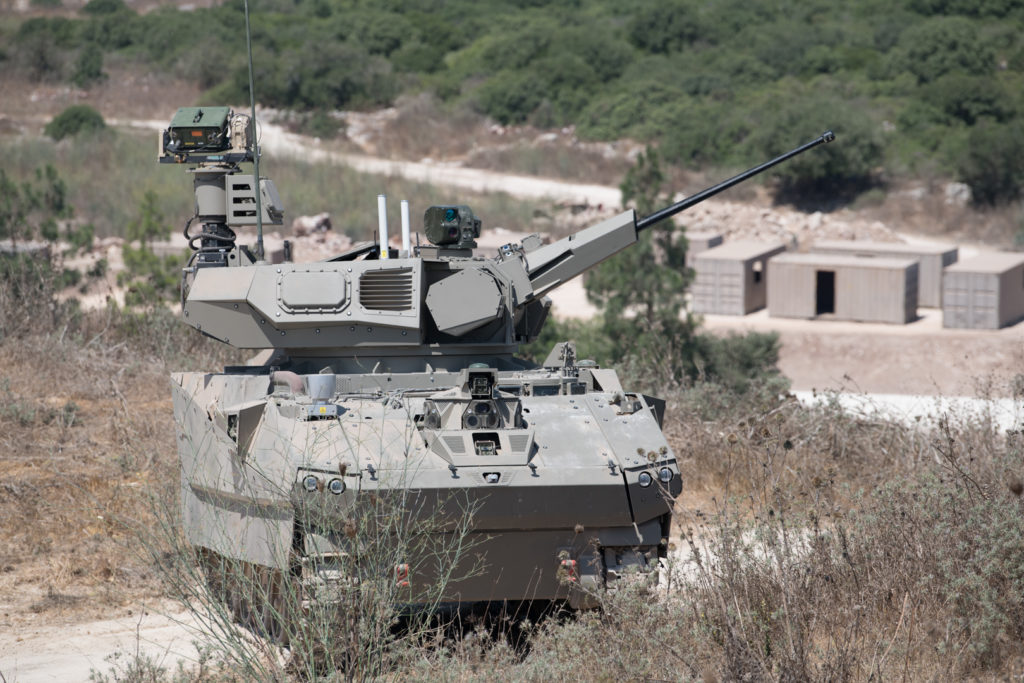
Rafael’s Solution
Rafael’s solution for future combat fighting vehicles utilises a large video wall display enabling the two crew-members to focus on the mission while intuitively sharing tasks among themselves and with virtual assistants. This transparent cockpit design provides constant 360-degree situational awareness, stacking two-layers, each covering 180 degrees. Augmented reality is used for real-time battlefield information and data. Video annotations highlight the objects of interest, friendly forces, suspected and confirmed targets, or messages alerting crew-members to act.
This includes targets, Blue Forces, and other Points of Interest, as well as an autonomous mission support system for autonomous mission planning, driving, and simultaneous operation of all vehicle weapon systems, all based on combat artificial intelligence capabilities.
These technologies are also combined with RAFAEL’s breakthrough FIREWEAVER Networked Targeting and Control System, providing real-time pixel-based target designation and fire co-ordination, allowing simultaneous precise strikes on multiple targets within seconds.
Other Capabilities
The Carmel Programme also includes the development of other capabilities that were not presented during the demonstration day. Such capacities include: a platform with hybrid-electric propulsion, energy storage with high capacity to support the electronic systems on board, signature reduction (including active camouflage), multi-task radar providing self-defence (active protection) from anti-tank threats as well as detection and tracking of drones, vehicles and humans, blue force tracking and various types of weapon systems (including direct and indirect fires, self-protection and high-energy lasers).Another aspect to be pursued at a later stage is teamwork – the synergy between several Carmel vehicles, sharing information and tasks using broadband connectivity. Manned-Unmanned Teaming will evaluate the advantages of augmenting the small crew with the capabilities of associated robotic team members.
Lessons Learned
The lessons learned from the recent evaluation will be assessed and presented to the DRDD for further action. DRDD is expected to either recommend a technology mix for further development and integration in a future platform or to select a single provider or a team to act as a prime contractor. Among the technologies already selected for integration into future platforms is the IRON VISION helmet display from Elbit Systems, which will be integrated in the next phase of the MERKAVA Main Battle Tank – the MERKAVA Mk4 BARAK. Other systems could be included in the EITAN APC and NAMER heavy armoured infantry combat vehicle.
While Carmel is undergoing evaluation and technology demonstrations, the IDF plans to introduce two new armoured vehicles to modernise and enhance the capabilities of armoured and mechanised infantry. The MERKAVA Mk4 BARAK (lightning in Hebrew) is the latest version of MERKAVA, soon to be entering service. This will implement some of the capabilities developed for the Carmel, including AI and the IRON VISION augmented vision system, enabling the crew to view the outside world on their helmet display, with information embedded in the world view. AI enables the crew to improve target recognition and tracking under difficult visibility.
EITAN, the new 8×8 armoured vehicle designed and built by the MoD Tank Authority, will replace the M-113s, which is being withdrawn from active and reserve service. EITAN employs a new remotely operated turret mounting a 30mm auto-cannon that is likely be used in the Carmel, either in the original 30mm or 40mm SUPERSHOT version. The turret will also integrate advanced sensors and active protection capability, enhancing the vehicle’s combat effectiveness in the complex battlespace.
Tamir Eshel is a security and defence commentator based in Israel.




